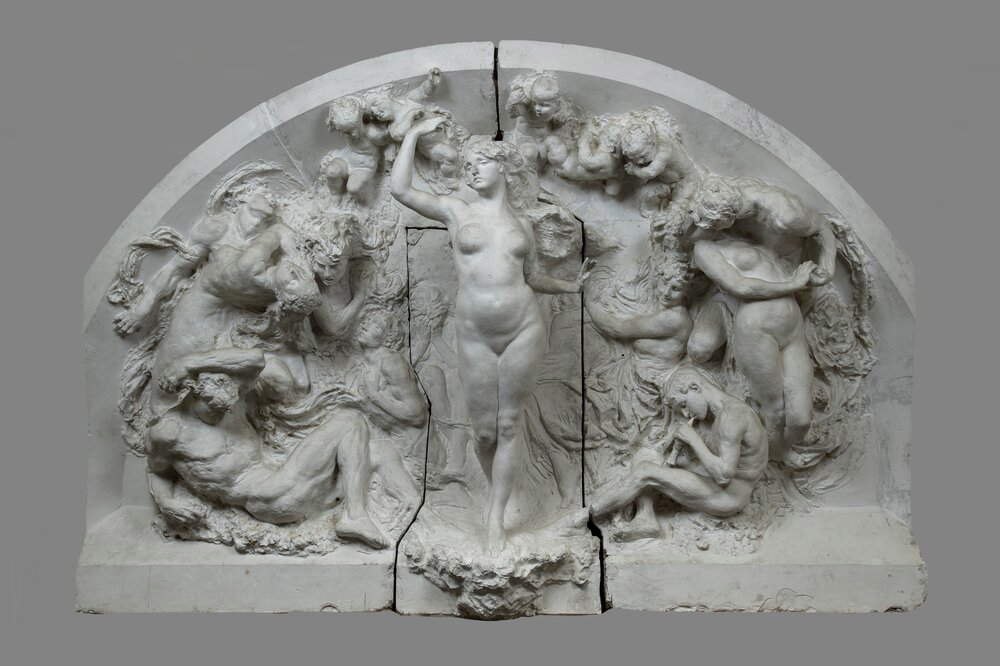The Bistolfi Museum in Casale Monferrato presents the digital catalog of Leonardo Bistolfi
The Museo Civico e Gipsoteca Bistolfi in Casale Monferrato (Alessandria, Italy), custodian of the work of Leonardo Bistolfi (Casale Monferrato, 1859 - La Loggia, 1933), has recently unveiled a project of great cultural and technological value: a new digital catalog that brings together more than 1,400 works by the celebrated Italian sculptor. A native of Casale Monferrato and a leading figure on the European art scene at the turn of the 19th and 20th centuries, Bistolfi left an indelible mark on the sculptural scene with a production that ranges from monumental sculptures to drawings, sketches and works of various kinds. The Civic Museum’s collection, which holds many of his works thanks to donations from heirs and private collectors, is now being made available to the public through an innovative digital platform.
The project, titled Returning a Master, was realized thanks to the support of the Turin-based company Emblème, which deals with the management, valorization and digitization of art collections and archives. In fact, Emblème oversaw the digitization of a large body of works, consisting not only of sculptures, but also of drawings, notebooks, paintings, letters, books and documents, allowing for easy access and enjoyment by the public through the Museum’s web page.


Bistolfi digitized: an archive of 1,400 catalogued works
At the heart of this initiative is the Digital Caveau, a platform that collects and organizes more than 1,400 works, all accompanied by descriptive cards rich in technical and historical information. This information, combined with high-definition images, composes a catalog freely accessible by all(at this address) to explore Bistolfi’s artistic production in a detailed and dynamic way. The digitization, in fact, is not limited to the simple archiving of the works: each object has been analyzed and catalogued, with the support of a professional photographic campaign that has made it possible to return sharp, quality images of the sculptures and documents.
In particular, the platform makes it possible to explore Bistolfi’s creative journey through six paths linked to as many of the artist’s seminal works: the Facade of the National Opera House in Mexico, the Hierschel de Minerbi Chapel, the Monument to Giovanni Segantini in Sankt Moritz, the Monument to Giuseppe Garibaldi in San Remo, the Monument to Giosuè Carducci , and the Brayda Cross. Each itinerary is enriched by a detailed analysis, recounting the artist’s creative process from the preliminary design stages to the final results, with a special focus on the connections between drawings, sketches, plaster casts and finished works.
Another important aspect of the project is the inclusion of an area devoted to recent restorations. An example of this is the Laundresses sculpture, which was in a fragmentary state at the time of donation in 2021. Thanks to restoration efforts, this work was reassembled in 2024 and can now be seen in its restored version in the digital platform.
The digital catalog not only presents Bistolfi’s works, but also includes a list of people connected to his life and sculptures, such as the famous criminologist Cesare Lombroso, the poet Giovanni Pascoli, and the conductor Arturo Toscanini. These personalities came into contact with the artist or his works, contributing to the spread of his fame and international recognition.
The Restoring a Maestro project has received significant financial support from the Municipal Administration of Casale Monferrato, which contributed its own funds, as well as from the CRAL Foundation and the CRT Foundation. These two entities, which have always been committed to supporting cultural and museum initiatives, made possible the realization of this ambitious work to enhance the artistic heritage of the territory.
The platform, which is destined to be continually updated and enriched, has a dual function: on the one hand, it serves as a management tool for the Museum, allowing it to keep the enormous amount of archival and artistic material under control; on the other hand, it represents a valuable resource for enthusiasts and anyone who wants to learn more about Leonardo Bistolfi, thanks to the free and public access to the platform.


Next developments: expansion of the project, and a monograph on Bistolfi
The work done by Emblème and the Civic Museum does not stop here. The initiative is part of a broader process of digitizing and enhancing the artistic heritage, with the aim of making it available to an increasingly wide audience. The online platform is only the first step toward a future expansion of the project, which includes the integration of new materials and the enhancement of interactivity to ensure an increasingly immersive and engaging experience for visitors.
In parallel, the museum has organized the publication of a monograph entitled Leonardo Bistolfi. Unpublished Paths from the Gipsoteca of Casale Monferrato, edited by Sandra Berresford and published by Allemandi in 2024. The monograph represents a further in-depth study of Bistolfi’s work, enriched by a selection of documents, historical photographs, and scholarly contributions that recount the artist’s life and work.
 |
| The Bistolfi Museum in Casale Monferrato presents the digital catalog of Leonardo Bistolfi |
Warning: the translation into English of the original Italian article was created using automatic tools. We undertake to review all articles, but we do not guarantee the total absence of inaccuracies in the translation due to the program. You can find the original by clicking on the ITA button. If you find any mistake,please contact us.



























